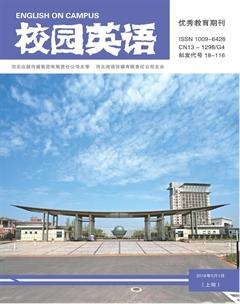Acronyms of University Names
张玲
【Abstract】Acronym is made up from the first letters of the name of an organization, which has a heavily modified headword. The purpose of the essay is to discuss how some universities get its own shortened name, whether it simply comes from the first letter of each word in the full name and to research the way how universities English names are shortened.
【Key words】Acronyms; University Names
At the very beginning, we observed that universities shortened names are made up by the means called acronym, which is to take the first letter of each word from the full name except the function words like of and conjunctions like and as the general rule. E.g.: Shanghai International Studies University (SISU). However, when it comes to some other shortened names like Southwest University of Science and Technology (SWUST), there is an additional letter—W. Is there no general rule of acronym? How to explain these irregular phenomena?
The words in capital letters would require much more concentration to avoid losing the specific meaning. When reading, we read the word shapes that letters combine to form rather than the individual letters; uppercase ones have a variety of extending words, which makes them more difficult to be distinguished. Therefore, according to the function of language, our explanatory hypothesis is that people use acronym to reach a specific goal within the different cultural and geographical background. As an acronym has stood for various things, but the current standard is: Really Simple Syndication(RSS), which must be based on avoiding ambiguity.
The first set of data is about universities in China, and the acronyms of universities names we chose are acknowledged by Chinese Ministry of Education. The author found that the general rule can apply to some university names such as Shanghai International Studies University (SISU), University of Electronic Science and Technology of China (UESTC) and so forth. In a total number of 84 authorized universities, 62.0% universities adopt this means to shorten their names. And we found that some are named after its place name, although its just one word. E.g.: Nankai University (NKU), and Chongqing University (CQU). So we wondered what if Nankai University is shortened as NU, just take the capital letter from the full name, can we still distinguish Nanjing University, Nanchang University and Naikai University, also Southwest University (SWU), Sichuan University (SCU) and Southeast University (SEU).
The second group of data is from the United States. In a total number of 51 prominent and authorized universities from the country, 39% of the universities capitalize the first letter as their shortened names. And around 45% of the universities use the name of the place to refer to the school, such as Harvard for Harvard University, Princeton for Princeton University, Stanford for Stanford University, and so on. The reason why people use this kind of acronym is that the shortened form of universitys name is popular among people and accepted by people without ambiguity. And the shortened form is in accordance with cultural and geographical backgrounds. Besides, there are a few universities adopting the shortened form which includes part of the first letters and part of words except function words. E.g.: UCDavis for University of California-Davis, UTexas for University of Texas-Austin. This kind of shortened form takes accuracy, feasibility, different cultural and geographical backgrounds into consideration so as to make the shortened form acceptable.
In conclusion, according to these statistics and examples shown above, we already know that there is a general rule which capitalizes the first letter of each word, except the function words like of and conjunctions like and so on. If some universities names might be misunderstood under the general rule, in this case, we accept the RSS explanatory theory. Meanwhile, we shorten these universities names on the basis of different cultural and geographical background, and other forms which must be reasonable and grammatically right and unequivocal.
References:
[1]Hu Zhuang-lin(胡壮麟).语言学教程(第四版)[M].北京大学出版社.

